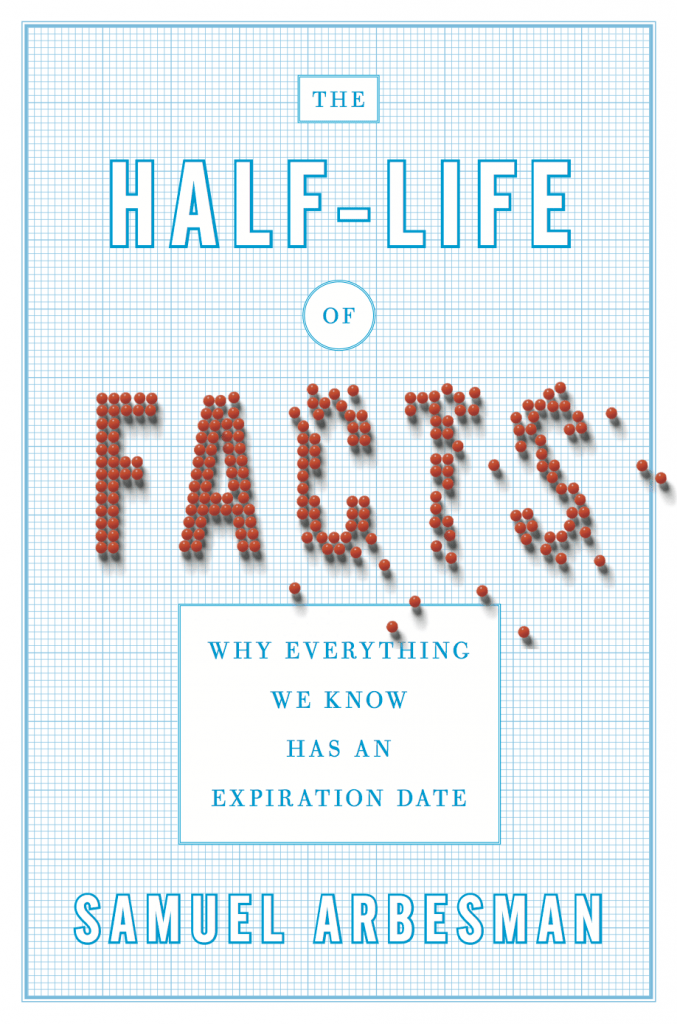Review by Evan Gough
Knowledge is changing all the time. New facts replace old facts, more precise measurements supersede previous measurements. What was once considered true is overturned daily in our quickly changing times. In “The Half-Life of Facts: why everything we know has an expiration date,” Samuel Arbesman brings some clarity to our constantly changing factual landscape.
It turns out that facts have a shelf-life, and that there is a mathematical predictability to that shelf-life. With an engaging style of storytelling, and just the right amount of graphs and tables, Arbesman walks us through the field of scientometrics, the scientific study of science itself. What do we learn?
We learn that scientific studies themselves have half-lives. For example, the half-life of a study on hepatitis and cirrhosis, both liver diseases, is about 45 years. After 45 years, half of that knowledge will be overturned or superseded. We also learn that differing sciences have different half-lives. The half-life of a physics paper is on average 13.07 years, in Math it’s 9.17 years, and in Psychology it’s 7.15.
“The Half-Life of Facts” is full of familiar examples of, and insights into, our changing knowledge. Universe Today readers will be familiar with the demotion of Pluto from planet to trans-Neptunian object. Other examples in Arbesman’s book will be unfamiliar. For instance, it may be surprising to find out that for many decades it was an established fact that humans had 48 chromosomes. (We have 46.) This was considered such an elementary truth, that other researchers who counted 46 sometimes shut down their research prematurely, thinking they were somehow in error. Eventually, however, the truth did win out.
How science gets us closer to the truth over time is the main thrust of this book. That, and the predictability of that progress towards greater accuracy. But there are chapters that cover how facts spread, how new knowledge is hidden in connections between previously published studies, and how improvements in technology can spur science on to more accurate truths.
Overall, “The Half-Life of Facts” is an engaging book. It moves along at a nice pace, and I think Universe Today readers will find it very interesting. My only beef with the book is its title. It’s about much more than the half-life of facts. It’s a vivid account of the surprising ways in which new facts are accumulated, and how old knowledge is overturned.
Find out more about this book and the author at this website.

